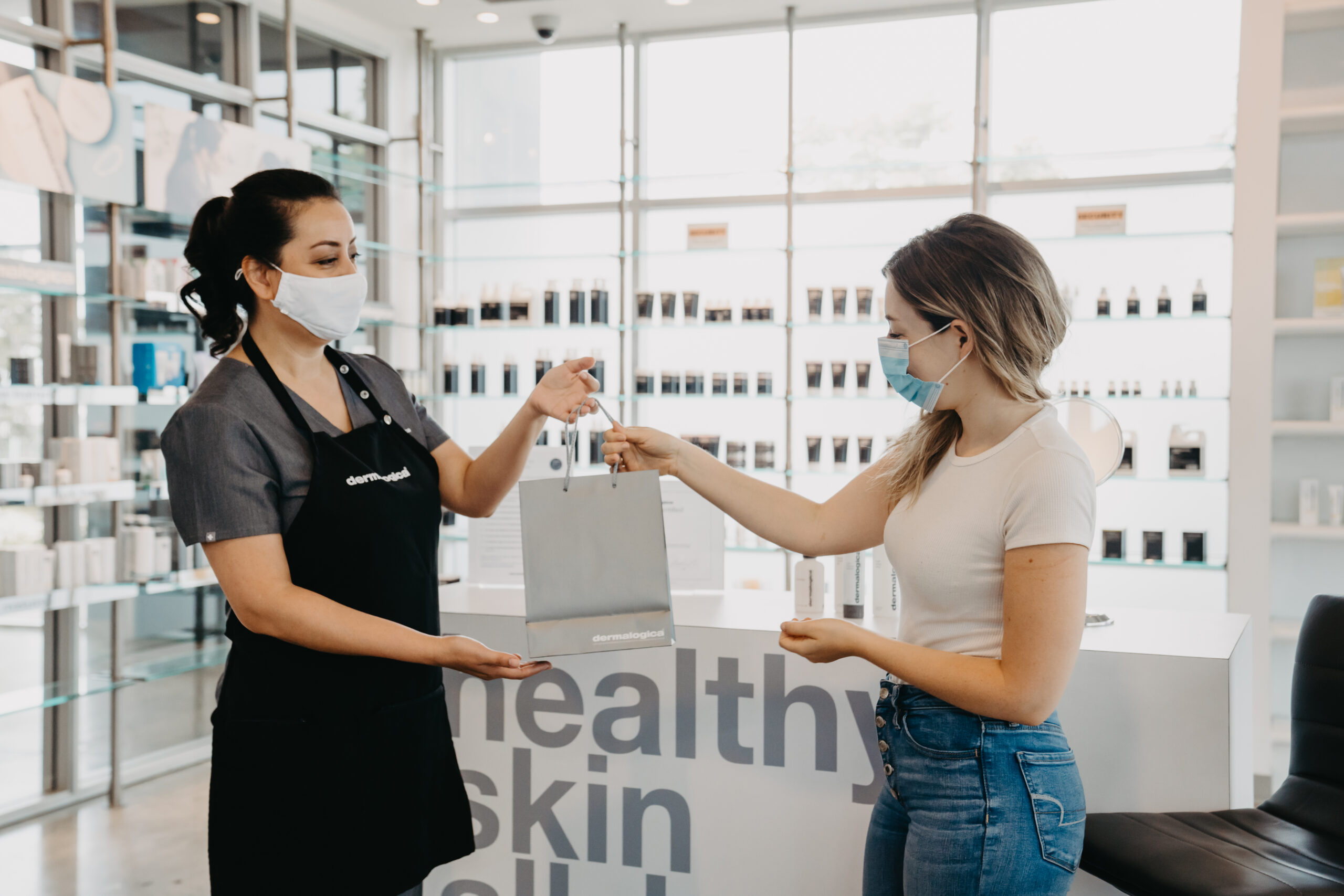
It may be human nature to overdo things. We often seem to act on the axiom, “If some is good, more is betterâ€. Super-sizing is an especially bad idea when it comes to exfoliation services.
Manufacturers and skin therapists (I don’t think clients know this) are correct when they say that exfoliation is needed in order to allow treatment products to work. And it’s undeniably true that exfoliation services themselves, using mechanical exfoliation, chemical exfoliation, or both, boost cell renewal, de-keratinize and slough dead cell debris for a smooth polished finish which looks refined and feels more youthful.
Irritability and Age (…Of the Skin!)
Ironically, a course of action intended to keep the skin vibrant, supple and youthful, may result in a skin which is more fragile, has less natural ability to protect from UV, is easily sensitized, heals more slowly and lacks in general structural fortitude. Parchment paper comes to mind.
We now know that much of what we call aging is caused by inflammation. And overly aggressive exfoliation, along with other cutaneous assault such as pollution and UV exposure, set off the cascade of dermal interactions known as inflammation. It is very important to note that skin, which is past the age of 25 or so, recovers more slowly from inflammation. In fact, inflammation, whether in response to a heavy-handed microdermabrasion procedure or some other inflammatory condition such as adult acne, may result in extremely persistent redness—and by persistent, we mean that it may not ever really dissipate.
The good news is, our skin is genetically designed for remarkable resilience. The human skin produces about 1,000,000 skin cells every 40 minutes, which equates to over 36 million skin cells per day. No wonder we think nothing of obliterating them with scrubs, enzymes, acids, sonic brushes and other procedures! Our mission as skin therapists is to strike a responsible, effective balance for our clients: keeping the skin polished, without setting off inflammatory reactions and damaging the protective barrier.
Less Is More
Gentle exfoliation keeps the debris from accumulating. Today, the market is full of exfoliants which are gentle enough to use daily, such as superfine micro-powders and precise dose leave-on serums containing silky micro-particles of Rice Bran, Phytic Acid or Salicylic Acid botanical extract combos. These lift dead cell debris, gently resurface using only the mildest bit of mechanical action, and still leave the lipid barrier robust and intact.
This is why it’s so important to interview, consult and map out the facial conditions of your client, as a free service before any product purchase and certainly before any professional service. For instance, ask if your client has had a cold-bug lately or has allergies. If the answer is yes, the area around the nose and mouth may be abraded, flakey and dry from constant nose blowing and wiping with tissues. Using a low pH Hydroxy Acid on this area could then result in peeling, stinging and trauma. What your client frankly describes to her lawyer as a burn! So be aware that this could put you in a possible litigious predicament too. Keep in mind we have to follow our individual state board rules and work within our scope of practice and that’s removing dead tissue only.
Often, problems arise when clients start to “help the program along†by being over enthusiastic with different products in the confines of their bathroom or while in the gym sauna! Also discuss their comfort-level, perhaps from years in the gym with masochistic fitness trainers, many consumers believe that pain is required part of an effective regimen. This may be true of acquiring a rock-hard six-pack—but it definitely is NOT true of effective skin care.
Nix the Mix
Combining products and procedures “freestyleâ€, without the close supervision of a licensed therapist, is where consumers often get themselves into trouble. The trumpeting claims of lunchtime lasers and other medi-office procedures along with powerful products may prove irresistible, especially with the advance of age, and especially with the impending arrival of a pivotal life passage such as a high school reunion or a daughter’s wedding.
Ask your client about medications that she may be using. Be sure to ask if she uses Retin-A, Renova, Adapalene or other retinoids, or Isotretinoin (previously known as Accutane). Note that clients taking oral Isotretinoin within the last six months are contraindicated for exfoliation and waxing. Be careful, ask specifically, and get your client’s signature on the consultation card for the file.
It’s no coincidence that women often start to overdo it in terms of exfoliation at midlife. This is when the cell-turnover begins to slow, and the skin’s overall metabolism subtly declines. In response, many women may get a bit reckless, wanting to “amp up†the exfoliation. In the hands of a licensed skin therapist, it is possible to safely raise the bioactivity of an exfoliant treatment. This, however, is a professional service and must be based on in depth, ongoing consultation with the client. The key phrase to impart to your clients when exfoliating with anything other than one single, gentle product: “Don’t Try This At Home!â€
Update Your Menu
When consulting with clients, let them know that The International Dermal Institute doesn’t recommend low pH, high percentage use of pure Glycolic Acid, although this powerful exfoliant is even available online direct to consumers. Glycolic Acid aggressively travels through the layers of the skin, is difficult to control, and can cause unnecessary irritation, erythema and inflammation. With the plethora of exfoliating ingredients and products available today, the professional can find alternatives that perform better, are safer and easier to control, in terms of exfoliation for the vast majority of clients, without the major risks.
Ingredients like Lactic Acid, Salicylic Acid, Vitamin A and also non-acidic technologies like Peptides, Urea, Yeast, Sulfur, Bacillus ferment and Proteolytic fruit enzymes have become part of the new ingredient landscape.
Related articles
How Does Menopause Affect Your Skin?
Healing the Industry, the World and Ourselves
Controlling Aging Skin
stay in the know
Get special offers on the latest developments from Front.



